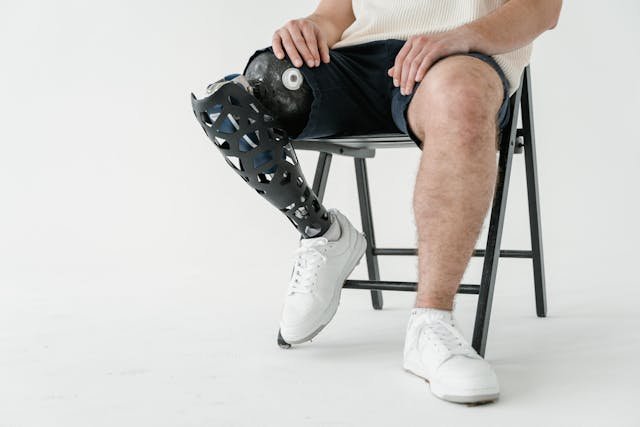When someone loses a limb, life changes in many ways. It can feel like everything familiar has shifted. But there is a clear path forward. With the right support, tools, and care, it is possible to regain independence and confidence. This journey is not just about getting a prosthetic; it’s about learning to live with it and thrive. At Robobionics, we walk every step of this path with you — from the first day of injury to the moment your prosthetic feels like a part of you.
Recovery takes time, but with the right roadmap, it becomes smoother and more manageable. This guide walks you through every major stage — from the first impact of injury to the day your prosthetic becomes a natural part of your life. It’s a step-by-step journey, built on care, clarity, and progress.
Stage 1: Understanding the Impact of Limb Loss
The first stage of recovery is often the hardest. It’s filled with big changes and deep emotions. Understanding what you or your loved one is going through is the first important step. Limb loss affects more than the body — it touches every part of life.
Physical and Emotional Effects
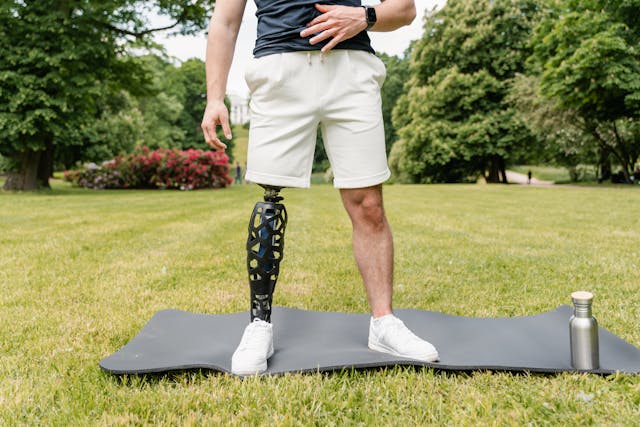
Losing a limb affects more than just the body. It changes how a person moves, thinks, and feels. The emotional effects can be just as deep as the physical ones. People often feel overwhelmed, scared, or uncertain. It’s important to know that these feelings are normal. What matters is knowing that help is available and that recovery is possible.
After the injury, the body needs time to heal, but so does the mind. Many people go through different stages of grief — shock, sadness, anger, and finally, acceptance. Talking to a counselor, a doctor, or even someone who has gone through a similar experience can be a huge help during this phase.
Robobionics understands how hard this time can be. That’s why our approach goes beyond just providing a prosthetic. We focus on the whole person — not just the limb. Book a free demo of Grippy™ today and see how we can help right from the beginning.
Early Medical Support
Right after the injury, quick and proper medical attention is key. Doctors will assess the wound, decide if surgery is needed, and start the healing process. In this stage, preventing infection, reducing swelling, and keeping the area clean are top priorities.
Along with medical care, the care team starts thinking ahead. They look at the shape of the remaining limb and how well it can support a prosthetic. They may use bandages or devices to shape it for a better fit in the future. These early steps make a big difference later on.
Robobionics partners with clinics and hospitals to make sure patients get the best care from the start. Our experts are ready to guide you even during your hospital stay. Contact us today to find out how we support you at every step.
Family and Caregiver Involvement
Family plays a big role in recovery. When a loved one loses a limb, the whole family feels it. They often step in as caregivers, helping with daily tasks and offering emotional strength. But it can be tough on them too. That’s why support should include them as well.
Educating the family is part of our process at Robobionics. We make sure they understand what’s ahead. They learn about the stages of healing, how the prosthetic works, and how to help with rehab. This makes the whole journey easier for everyone involved.
Whether you’re the user or a family member, you’re not alone. Robobionics provides full guidance throughout the journey. Reach out now to learn how we involve families and caregivers for better outcomes.
Stage 2: Preparing for the Prosthetic Journey
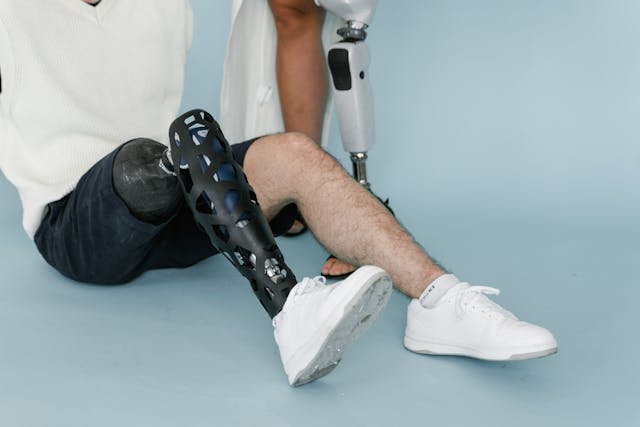
After the wound has healed and the swelling goes down, it’s time to start planning for a prosthetic. This part of the journey is all about readiness — physically, mentally, and emotionally. It’s when questions turn into decisions.
Evaluation and Readiness
Once the limb has healed and swelling has gone down, the next step is evaluation. A specialist will look at the shape, size, and strength of the remaining limb. This helps in deciding the right type of prosthetic and how to fit it properly.
They also look at your lifestyle. Do you need a prosthetic for work, daily activities, or hobbies? The answer helps decide which features are important. A child who wants to play, for example, will need a different kind of hand than someone who wants to type or lift things.
At Robobionics, we use detailed assessments to make sure the solution fits you. Our advanced scanning and measurement tools help create a personalized plan. Schedule a one-on-one consultation with us to start your evaluation process.
Exploring Prosthetic Options
There are many kinds of prosthetics available today. Some are simple and others are advanced. The right one depends on your needs and goals. A bionic hand like Grippy™, for example, lets you pick up objects, feel pressure, and even do fine movements with ease.
We design prosthetics that are light, strong, and easy to use. Our focus is on comfort and performance. Because they’re made in India, our devices are more affordable and quicker to deliver than imported options. This means you get help sooner and at a better cost.
If you’re curious about what’s possible, the best way to learn is by trying. Book a free demo of Grippy™ now and experience the difference firsthand.
Setting Expectations
The path to using a prosthetic takes time. It’s important to set clear and realistic goals. In the beginning, you may feel unsure or even frustrated. But with steady practice and the right support, you’ll make real progress.
Learning to use your new hand or leg is like learning a new skill. It takes time, patience, and regular practice. You won’t be perfect on the first day, and that’s completely okay. The goal is to improve a little every day.
At Robobionics, we walk with you at your pace. Our team helps set achievable milestones so you never feel overwhelmed. Let’s build your journey together — contact us now to learn how we plan your steps forward.
Stage 3: Trial, Training, and Gamified Rehab
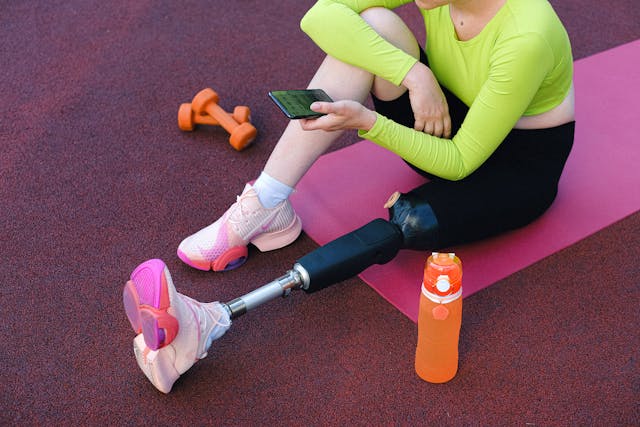
Once you’ve selected your prosthetic, the real journey begins — learning how to use it. This stage combines testing, training, and having fun while building new habits. It’s where things start becoming real, and your confidence begins to grow.
Demo and Trial Period
Before a prosthetic becomes a permanent part of your life, it’s important to try it out. This is the trial stage. You get to wear the prosthetic, use it in daily life, and see how it feels. It’s a safe way to test if the fit and function are right.
This stage also helps identify any adjustments needed. Maybe the grip feels too tight or the socket needs a tweak. These small changes can make a big difference. It’s better to find out during the trial than later on.
Robobionics offers a structured trial period, including training and daily-use support. You get hands-on time with the device and guidance from experts. Try Grippy™ for yourself — book a trial today and take the first step toward real independence.
Adaptive Training and Use
Once the trial goes well, it’s time to train with your prosthetic. This means learning how to use it in real-life situations. You start with simple tasks and move to more complex ones over time. It’s not just about moving; it’s about doing things with confidence.
Our trainers work closely with you. They watch how you use the prosthetic and help you get better with each session. It’s like having a coach by your side, guiding you through challenges and celebrating every win with you.
With Robobionics, you’re never alone. We offer in-person and virtual training based on what suits you best. Join our personalized training sessions and unlock the full power of your new limb.
Gamified Home-Based Rehab
Rehab doesn’t stop at the clinic. In fact, the most progress often happens at home. That’s why we created gamified rehab programs. These are fun, easy-to-follow games that help you improve your movement while enjoying the process.
Using simple tools like your phone or tablet, you can play these games while building strength and control. The exercises don’t feel like work — they feel like play. And the more you practice, the faster you adapt to your prosthetic.
This unique system is a big part of what makes Robobionics different. We believe that recovery can be fun and engaging. Try our home-based gamified rehab today and see how quickly your progress picks up.
Stage 4: Final Fitment and Long-Term Use
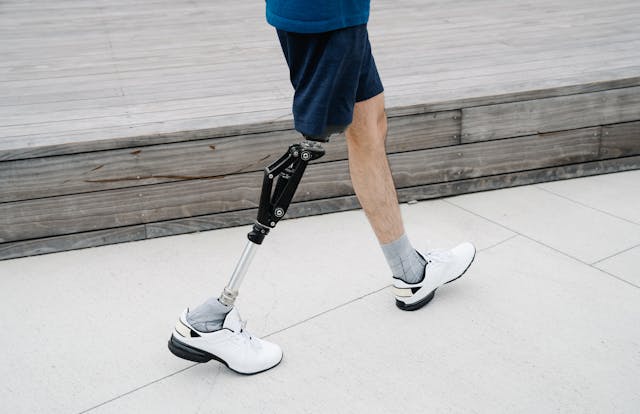
You’ve trained, tested, and adapted. Now it’s time to make your prosthetic truly yours. This stage focuses on making the final fit perfect and helping you integrate your new limb into everyday life with confidence.
Custom Fitment Process
Once your trial is successful and training is complete, we move to final fitment. This is when the prosthetic is fully customized for you. We make sure the socket fits perfectly, the limb moves naturally, and everything feels just right.
This process includes small tweaks to match your comfort. We take your feedback seriously and adjust the prosthetic to match your body and your lifestyle. The final fit should feel like an extension of you — not just a device.
Robobionics uses precision tools and expert technicians to make this possible. Book your final fitting with us today and feel the difference a perfect fit can make.
Everyday Integration
The real success of a prosthetic is when it becomes part of your daily life. This means brushing your teeth, cooking, typing, or playing — all with ease and confidence. It may take time, but each day you’ll get better at it.
We teach you how to handle different situations. From getting dressed to using tools, we guide you step by step. You’ll also learn how to care for your prosthetic so it lasts longer and works better.
Robobionics stays with you even after the final fit. Our care team checks in regularly and offers help whenever you need it. Talk to our team now to learn how we support you in daily life even after the journey is complete.
Maintenance and Support
A prosthetic needs regular care to keep working well. Just like any tool, it may need cleaning, adjustments, or repairs over time. Having fast and local support is important, and that’s something Robobionics is proud to offer.
Since we design and make our prosthetics in India, we offer quicker service than imported ones. You don’t need to wait for weeks to get help. Our service centers and partner clinics are here to assist you quickly and reliably.
Need a repair or check-up? Visit your nearest Omnify Prosthetics clinic or reach out to our support team. We’re here for you — always.
Stage 5: Rebuilding Life with Confidence
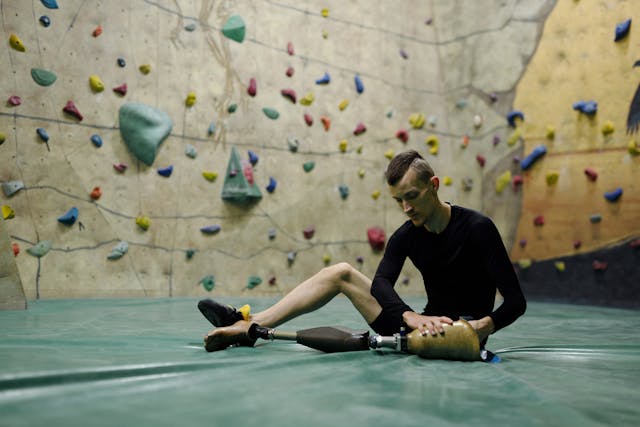
Rehabilitation doesn’t end with getting the prosthetic. The final stage is about rebuilding your life. This is where you rediscover your goals, passions, and sense of purpose. It’s about living fully, freely, and fearlessly.
Returning to Work or School
Getting back to work or school is a big step. It’s a sign that you’re ready to move forward. But it also brings new challenges. You may need to learn how to do tasks differently, manage people’s reactions, and balance your energy levels.
We help you prepare for this transition. You’ll learn how to use your prosthetic in your daily tasks. We also offer tips for handling questions and building confidence. Our goal is to make sure you don’t just return — you succeed.
Robobionics also works with employers and schools to make spaces more inclusive. Let us help you return to work or school — contact our integration team today.
Building Social Confidence
It’s common to feel unsure in social settings after getting a prosthetic. Some people worry about how they look or how others will react. This is normal, but it doesn’t have to stop you from enjoying life.
Through counseling, support groups, and positive experiences, confidence grows. Wearing a prosthetic doesn’t define you — it empowers you. The more you use it, the more natural it feels, and the more others will see your strength, not your difference.
At Robobionics, we believe every person deserves to feel proud of who they are. Join our support community today and find your circle of strength.
Living with Purpose
The final part of the journey is living with purpose. Whether it’s returning to a hobby, helping others, or simply enjoying daily life — this is where real healing shines. A prosthetic is not the end of the story; it’s the start of a new one.
We’ve seen people do amazing things with their prosthetics — from sports to arts, from work to travel. And every one of them started just like you, with one small step forward.
Robobionics is proud to walk with you through each stage. Begin your journey with us now — book your free demo and take the first step toward a more confident, independent life.
Stage 6: Giving Back and Inspiring Others
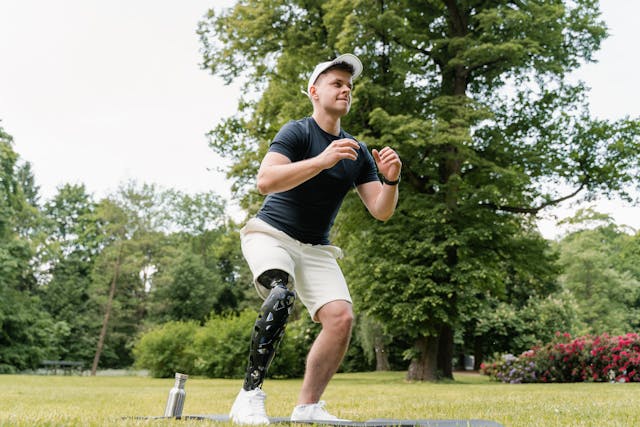
The final and often most powerful stage of the rehabilitation journey is giving back. Once you’ve adapted to your prosthetic and rebuilt your life, you may feel a strong desire to help others who are just beginning their own path. This step is not just about inspiring others — it’s also a way to heal and grow even further.
Becoming a Mentor
Many prosthetic users become mentors without even realizing it. When you share your story, show someone how to use a prosthetic, or simply lend an ear, you’re making a big impact. New users often feel alone or unsure, and seeing someone who’s walked the same path can give them hope and courage.
Mentorship doesn’t have to be formal. It can be as simple as a conversation, a visit to a hospital, or even a social media post. These small actions have the power to spark change in someone else’s journey. You don’t need to have all the answers — just showing up makes a difference.
At Robobionics, we help connect experienced users with new ones through our community network. Interested in becoming a mentor? Contact us today and learn how you can guide someone toward strength and success.
Joining Disability Advocacy
When people with prosthetics speak up, society listens. Many users become active in raising awareness, pushing for better policies, and building a more inclusive world. Advocacy gives voice to the challenges and victories of life with a prosthetic.
By joining support groups, disability forums, or even attending local events, you become part of a larger mission. You help change how people view limb loss, not as a weakness, but as a story of resilience. This step empowers you while helping to improve lives everywhere.
Robobionics proudly supports disability advocacy in India through our CSR and outreach programs. Join hands with us in building a more accessible and compassionate future for all.
Creating a Ripple Effect
The beauty of this stage is that every action, no matter how small, creates a ripple effect. Helping one person, sharing your journey, or encouraging a child with a new prosthetic can lead to lasting change — in families, communities, and beyond.
Some people go on to start NGOs, volunteer in hospitals, or speak at events. Others simply lead by example — living life fully and showing the world what’s possible. Whatever path you choose, you’re making a difference that goes beyond yourself.
Robobionics celebrates every user who chooses to give back. Your courage and kindness shape a stronger, more caring world. Be the reason someone doesn’t give up — connect with our community and be part of the ripple.
Conclusion: A Journey of Strength, Step by Step
The path from injury to full prosthetic integration is not a quick fix — it’s a journey built on strength, patience, and belief. Each stage matters. From the early days of healing, through fitting and training, all the way to giving back and thriving, every step is a story of transformation.
Robobionics is more than a prosthetics company. We are your partners in healing. With our Made-in-India solutions, expert clinics like Omnify Prosthetics, gamified home rehab, and compassionate care, we make sure you’re never alone. Your life doesn’t pause after limb loss — it grows stronger in new and amazing ways.
If you’re just beginning your journey, know that there’s a whole community here for you. Book a free demo of Grippy™, explore our care programs, and take your first step with confidence. You’ve got this — and we’ve got you.



